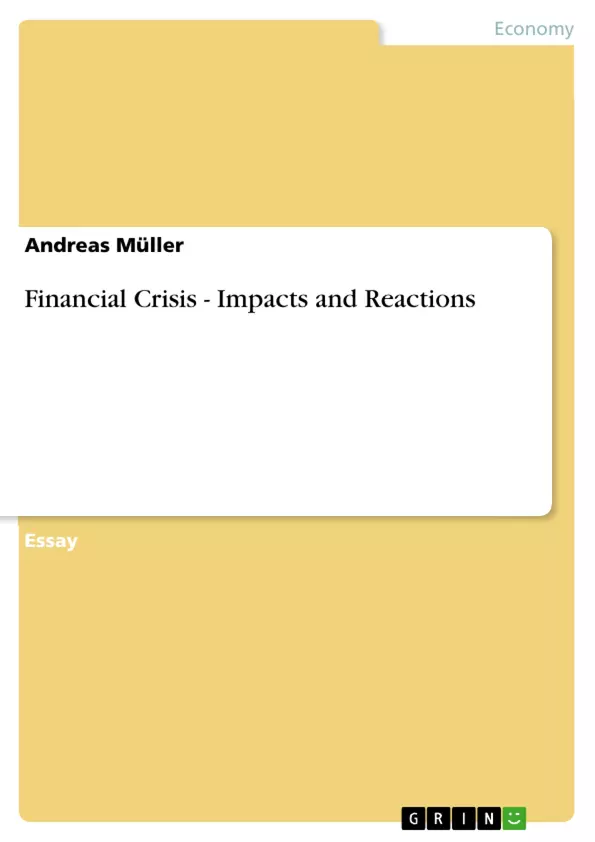For the last couple of years the world has been experiencing one of the most severe financial crises ever which has been often compared to the Great Depression from 1929. Starting with the Mortage crisis in the USA in 2007 and the collapse of Lehman Brothers in September 2008, this problem increased to the worst global economic crisis ever. The negative effects of the Global Financial Crisis from 2007-2009 are both financial and real. The financial impact of the crisis resulted in problems in the banking systems of many countries. The real impact was that the economic growth has slowed down. The crisis bought many challenges and questions concerning the ability of the industries in the national economies to survive, the destiny of the employees and the role of the government in current market situation. However, the crisis might create opportunities for some industries if the companies don´t let themselves to be misled by the general negative moods towards the current state of the market.
The following essay gives an overview of the Global Financial Crisis and its challenges and monetary reactions.
Inhaltsverzeichnis (Table of Contents)
- Introduction
- Collapse of the Financial Markets
- Impacts on Financial Institutions
- Impacts on German Economy and Companies
- Monetary Reactions by the German Government
- Conclusion
Zielsetzung und Themenschwerpunkte (Objectives and Key Themes)
This essay provides an overview of the Global Financial Crisis, its challenges and monetary reactions. It explores the origins of the crisis in the U.S. mortgage market, its impact on financial institutions and the global economy, and the responses of governments to address the situation.
- The collapse of the financial markets due to the subprime mortgage crisis
- The impact of the crisis on financial institutions, both in the U.S. and Europe
- The consequences of the crisis for the German economy and companies
- The monetary reactions by the German government to mitigate the crisis
- The broader economic and social implications of the global financial crisis
Zusammenfassung der Kapitel (Chapter Summaries)
- Introduction: This chapter sets the context for the essay, discussing the severity of the Global Financial Crisis and its comparison to the Great Depression. It highlights the financial and real impacts of the crisis and the challenges it posed for industries, employees, and governments.
- Collapse of the Financial Markets: This chapter examines the origins of the crisis in the U.S. mortgage market. It traces the roots of the problem back to the Federal Reserve's decision to lower interest rates in 2001, leading to an abundance of credit and a boom in the real estate market. The chapter further explores the role of subprime loans and the resulting housing price bubble, which ultimately burst in 2006-2007, triggering a cascade of defaults and foreclosures.
- Impacts on Financial Institutions: This chapter focuses on the impact of the subprime crisis on financial institutions. It details the losses incurred by major U.S. and European banks, highlighting the case of Northern Rock as an early indicator of the troubles that would soon befall other institutions.
Schlüsselwörter (Keywords)
The essay focuses on the Global Financial Crisis, subprime mortgages, credit crisis, financial institutions, impacts on the economy, monetary reactions, German government, and the broader economic and social implications of the crisis.
- Quote paper
- Andreas Müller (Author), 2010, Financial Crisis - Impacts and Reactions, Munich, GRIN Verlag, https://www.grin.com/document/164372



